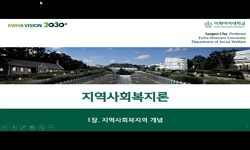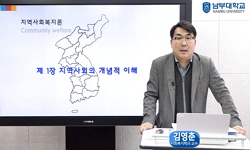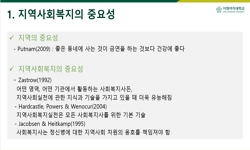South Sumatra’s capital, Palembang, has long maintained a river-oriented transportation system. With road transportation’s increased importance for exploiting natural resources, however, hundreds of roads have been constructed since the Dutch colo...
http://chineseinput.net/에서 pinyin(병음)방식으로 중국어를 변환할 수 있습니다.
변환된 중국어를 복사하여 사용하시면 됩니다.
- 中文 을 입력하시려면 zhongwen을 입력하시고 space를누르시면됩니다.
- 北京 을 입력하시려면 beijing을 입력하시고 space를 누르시면 됩니다.

근대로 향하는 길? 무시 대교(Jembatan Musi)를 통해서 본 도로건설과 지역개발의 상관관계 = The Road to Modernity? Politics of Building Bridges and Regional Development in the Case of the Musi Bridge
한글로보기https://www.riss.kr/link?id=A104038126
-
저자
여운경 (서강대학교)
- 발행기관
- 학술지명
- 권호사항
-
발행연도
2014
-
작성언어
Korean
-
주제어
무시 대교 ; 팔렘방 ; 지역 ; 중앙-지방관계 ; 지역개발 ; 국가개발 ; the Musi Bridge ; Palembang ; Region ; Center-Region Relations ; Regional Development ; National Development
-
등재정보
KCI등재
-
자료형태
학술저널
- 발행기관 URL
-
수록면
191-221(31쪽)
-
KCI 피인용횟수
2
- DOI식별코드
- 제공처
- 소장기관
-
0
상세조회 -
0
다운로드
부가정보
다국어 초록 (Multilingual Abstract)
South Sumatra’s capital, Palembang, has long maintained a river-oriented transportation system. With road transportation’s increased importance for exploiting natural resources, however, hundreds of roads have been constructed since the Dutch colonial period. This article examines how the construction of roads and bridges affected people’s lives and social networks in Palembang, and what social and political significance it has in the context of a region in the postcolonial Indonesia, with a focus on the huge river called the Musi River, which horizontally crosses the city. After independence, there has been strong aspiration to link these two parts by road, and in 1965 the Musi Bridge (then the Sukarno Bridge) over the river was eventually opened. The construction of the bridge apparently initiated socioeconomic transformations and development in the region, including Ulu (the southern river bank)’s rapid urbanization. However, the features of regional development actually were prerequisites for “national” development. The regional development was impossible without financial support from the central government, and the local or regional aspiration for development was often supported only when it fitted with national envision. The Musi Bridge was a model case that fitted with such national envision. While it was the symbol of regional development, it was also celebrated as an exemplary sign of “national” development, by both Sukarno’s government and Suharto’s New Order regime. By analyzing the discussions and discourses regarding the Musi project since early 1950s, in addition to its social and economic impact after the construction, this article explores the continuities and changes in the roles and significance of the (construction of the) Musi Bridge with the changing political backstops in both regimes. Together with it, this article also aims to reexamine the interplay between “the national” and “the regional” in the prevalent aspiration for the national and regional “development” throughout the 1950s and 1960s.
참고문헌 (Reference)
1 서지원, "시체 구덩이와 조명: 인도네시아 “65년사태”와 빤짜실라 기념비" 6 : 193-219, 2012
2 Akmal, Imelda, "Wiratman: Momentum and Innovation" Mitrawira Aneka Guna 2010
3 Santun, Dedi Irwanto Muhammad, "Venesia dari Timur:Memaknai Produksi dan Reproduksi Simbolik Kota Palembang dari Kolonial sampai Pascakolonial" Penerbit Ombak 2011
4 Miksic, John N., "Urbanization and Social Change: The Case of Sumatra" 37 : 3-30, 1989
5 Colombijn, Freek, "Under Construction: The Politics of Urban Space and Housing during the Decolonization of Indonesia, 1930-1960" KITLV Press 1960
6 Nispen, Marie-Louise ten Horn-van, "The Road to an Empire: Organisation and Technology of Road Construction in the Dutch East Indies, 1800-1949" 30 (30): 40-57, 2009
7 Nishihara, M., "The Japanese and Sukarno’s Indonesia:Tokyo-Jakarta Relations, 1951-1966" University of Hawaii Press 1966
8 Taal, Sandra, "The Indonesian Town Revisited" Institute of Southeast Asian Studies 172-200, 2002
9 Kusno, Abidin, "The Appearances of Memory: Mnemonic Practices of Architecture and Urban Form in Indonesia" Duke University Press 2010
10 Reid, Anthony, "Sumatra: An Indonesian Frontier" KITLV Press 2005
1 서지원, "시체 구덩이와 조명: 인도네시아 “65년사태”와 빤짜실라 기념비" 6 : 193-219, 2012
2 Akmal, Imelda, "Wiratman: Momentum and Innovation" Mitrawira Aneka Guna 2010
3 Santun, Dedi Irwanto Muhammad, "Venesia dari Timur:Memaknai Produksi dan Reproduksi Simbolik Kota Palembang dari Kolonial sampai Pascakolonial" Penerbit Ombak 2011
4 Miksic, John N., "Urbanization and Social Change: The Case of Sumatra" 37 : 3-30, 1989
5 Colombijn, Freek, "Under Construction: The Politics of Urban Space and Housing during the Decolonization of Indonesia, 1930-1960" KITLV Press 1960
6 Nispen, Marie-Louise ten Horn-van, "The Road to an Empire: Organisation and Technology of Road Construction in the Dutch East Indies, 1800-1949" 30 (30): 40-57, 2009
7 Nishihara, M., "The Japanese and Sukarno’s Indonesia:Tokyo-Jakarta Relations, 1951-1966" University of Hawaii Press 1966
8 Taal, Sandra, "The Indonesian Town Revisited" Institute of Southeast Asian Studies 172-200, 2002
9 Kusno, Abidin, "The Appearances of Memory: Mnemonic Practices of Architecture and Urban Form in Indonesia" Duke University Press 2010
10 Reid, Anthony, "Sumatra: An Indonesian Frontier" KITLV Press 2005
11 "Suara Rakjat Sumatera"
12 Pemerintah Propinsi Daerah Tingkat I Sumatera Selatan, "Sejarah Perkembangan Pemerintahan di Daerah Sumatera Selatan" Pemerintah Propinsi Daerah Tingkat I Sumatera Selatan 1996
13 Hanafiah, Djohan, "Sejarah Perkembangan Pemerintahan Kotamadya Daerah Tingkat II Palembang" Pemerintah Kotamadya Daerah Tingkat II Palembang 1998
14 "RA 15. Pidato Presiden RI 1958-1967"
15 Kementerian Penerangan, "Propinsi Sumatera Selatan" Kementerian Penerangan 1955
16 Yani, Amelia, "Profile of a Soldier" Heinemann Asia 1990
17 Jackson, J. C., "Post-Independence Developments and the Indonesian City: Preliminary Observations on the Spatial Structure of Palembang" 2 (2): 3-11, 1973
18 "Pidato Presiden pada Upacara Pemancangan Tiang Pertama Proyek Jembatan Musi di Palembang, 10 April 1962"
19 Jalaluddin, "Petunjuk Kota Palembang: Dari Wanua ke Kotamadya" Humas Pemerintah Kotamadya Daerah Tingkat II Palembang 1991
20 Utomo, Bambang Budi, "Perkembangan Kota Palembang dari Wanua Sriwijaya Menuju Palembang Modern" Dinas Pariwisata dan Kebudayaan, Pemirintah Daerah Kota Palembang 2005
21 Anderson, Benedict R. O'G., "Old State, New Society: Indonesia's New Order in Comparative Historical Perspective" 42 (42): 477-496, 1983
22 "Obor Rakjat"
23 Team Master Plan Kota Palembang, "Master Plan Kota Palembang 1974-1976" Team Master Plan Kota Palembang 1976
24 Abdullah, Makmun, "Kota Palembang Sebagai “Kota Dagang Dan Industri.” Jakarta: Proyek Inventarisasi dan Dokumentasi Sejarah Nasional" Direktorat Sejarah dan Nilai Tradisional, Departemen Pendidikan dan Kebudayaan 1985
25 Hanafiah, Djohan, "Kesan-Kesan dalam Kehidupan dan dalam Berkarya dari H. M. Ali" Pengalaman Seorang Pegawai Tiga Zaman. Palembang 1998
26 Zed, Mestika, "Kepialangan, Politik Dan Revolusi: Palembang 1900-1950" Pustaka LP3ES Indonesia 2003
27 Nas, Peter J. M., "Issues in Urban Development: Case Studies from Indonesia" CNWS 132-142, 1995
28 Colombijn, Freek, "Introduction: On the Road" 158 : 595-617, 2002
29 Asnan, Gusti, "Indonesian Transitions" Pustaka Pelajar 115-162, 2007
30 Schulte Nordholt, Henk, "Indonesia in the 1950s: Nation, Modernity and the Post-colonial State" 167 (167): 386-404, 2011
31 Dick, Howard, "Indonesia in Transition: Rethinking ‘Civil Society,’ ‘Region,’ and ‘Crisis,’" Pustaka Pelajar 175-194, 2006
32 Sutherland, Heather, "Indonesia in Search of Transition" Pustaka Pelajar 47-66, 2002
33 Collins, Elizabeth Fuller, "Indonesia Betrayed: How Development Fails" University of Hawaii Press 2007
34 Barendregt, Bart, "From the Realm of Many Rivers. Memory, Places and Notions of Home in the Southern Sumatran Highlands" Universiteit Leiden 2005
35 "Fikiran Rakjat"
36 Mrazek, Rudolf, "Engineers of Happy Land: Technology and Nationalism in a Colony" Princeton University Press 2002
37 Heryanto, Ariel, "Development of “Development" 46 : 1-24, 1988
38 McVey, Ruth T., "Democracy in Indonesia 1950s and 1990s" Center for Southeast Asia, Monash University 3-15, 1994
39 Hanafiah, Djohan, "Delapan Puluh Dua Tahun Pemerintahan Kota Palembang" Humas Pemerintah Kotamadya Daerah Tingkat II Palembang 1988
40 Komando Daerah Militer IV Sriwidjaja, "Date Unknown. Dokumentika Historia" Komando Daerah Militer IV Sriwidjaja
41 Smith, Michael Peter, "City and Nation: Rethinking Place and Identity" Transaction Publishers 1-14, 2001
42 Carmalos, Don, "Buku-Peringatan Lima Puluh Tahun Kota-Pradja Palembang" RHAMA Publishing.Buku 1956
43 Akib, R. H. M., "Buku-Peringatan Lima Puluh Tahun Kota-Pradja Palembang" RHAMA Publishing 1956
44 Lindblad, J. Thomas, "Bridges to New Business: The Economic Decolonization of Indonesia" KITLV Press 2008
45 Sohar, Harun, "Bintang dan Gelombang: Kumpulan Pidato, Tjeramah dan Tulisan Kolonel Harun Sohar" Badan Penerbit “Pahlawan.” 163-164, 1963
46 Taal, Sandra, "Between Ideal and Reality: Images of Palembang" Universiteit Leiden 2003
47 "Arsip Nasional Republik Indonesia (ANRI), Jakarta"
48 Anderson, Benedict R. O'G., "A Preliminary Analysis of the October 1, 1965, Coup in Indonesia" Modern Indonesia Project, SEAP, Cornell University 1971
49 Mrazek, Rudolf, "A Certain Age: Colonial Jakarta through the Memories of its Intellectuals" Duke University Press 2010
동일학술지(권/호) 다른 논문
-
- 한국동남아학회
- 연식 ( Jeong )
- 2014
- KCI등재
-
말레이시아 선거권위주의체제의 변화 가능성: 13대 총선을 중심으로
- 한국동남아학회
- 인원 ( Won In )
- 2014
- KCI등재
-
말레이시아 이슬람 경제의 대두: 금융과 소비 영역을 중심으로
- 한국동남아학회
- 선호 ( Ho Sun )
- 2014
- KCI등재
-
필리핀 방사모로 이슬람 자치지역의 개발정책수립을 위한 제언
- 한국동남아학회
- ( Lyol Lee )
- 2014
- KCI등재
분석정보
인용정보 인용지수 설명보기
학술지 이력
| 연월일 | 이력구분 | 이력상세 | 등재구분 |
|---|---|---|---|
| 2026 | 평가예정 | 재인증평가 신청대상 (재인증) | |
| 2020-01-01 | 평가 | 등재학술지 유지 (재인증) |  |
| 2017-01-01 | 평가 | 등재학술지 유지 (계속평가) |  |
| 2013-01-01 | 평가 | 등재학술지 유지 (등재유지) |  |
| 2010-01-01 | 평가 | 등재학술지 유지 (등재유지) |  |
| 2008-01-01 | 평가 | 등재학술지 유지 (등재유지) |  |
| 2006-01-01 | 평가 | 등재학술지 유지 (등재유지) |  |
| 2003-01-01 | 평가 | 등재학술지 선정 (등재후보2차) |  |
| 2002-01-01 | 평가 | 등재후보 1차 PASS (등재후보1차) |  |
| 1998-07-01 | 평가 | 등재후보학술지 선정 (신규평가) |  |
학술지 인용정보
| 기준연도 | WOS-KCI 통합IF(2년) | KCIF(2년) | KCIF(3년) |
|---|---|---|---|
| 2016 | 0.63 | 0.63 | 0.63 |
| KCIF(4년) | KCIF(5년) | 중심성지수(3년) | 즉시성지수 |
| 0.58 | 0.52 | 0.812 | 0.18 |




 KCI
KCI







